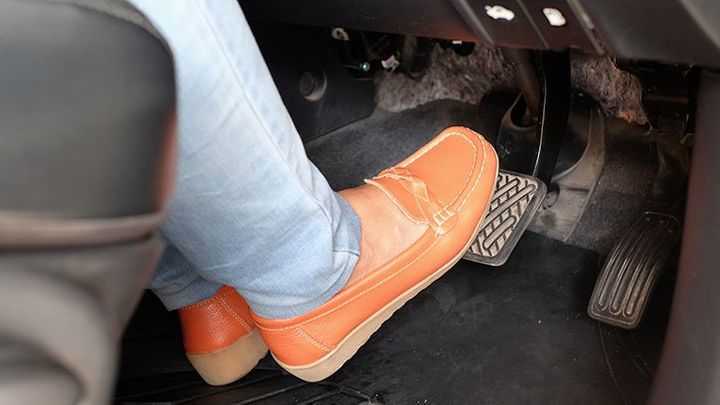Akshay, a 32-year-old startup entrepreneur, had to commute from Delhi to Gurgaon every day to get to his office. He began experiencing problems in his right foot from the big toe, arch, heel, and ball of the foot after driving for more than 5-6 hours per day. Even after resting and receiving medical treatment for a long time, and even though he had stopped driving, the pain did not go away.
The pain was usually at its worst when he sat for an extended period of time or got out of the car after a long drive. This agony kept him from doing daily activities and required him to see doctors on a regular basis. He was initially kept on medications, and while painkillers provided temporary relief, the pain returned as soon as he considered discontinuing them. Following a thorough investigation, the condition was determined to be Driver’s foot, which was causing problems with his plantar fascia.
Driver’s foot is a common foot pain condition caused by long periods of driving. Waiting in traffic and driving for 2-3 hours at a time not only causes heel pain, but it also causes numbness in the right leg, with pain spreading to his lower back. If left untreated for an extended period of time, this pain can progress to plantar fasciitis, which causes pain in the heel and ball of the foot.
What is a Driver’s foot?
A common cause of foot pain, especially among drivers. If the cause of the abnormality is not identified, this condition can lead to other complications. A person who drives for an extended period of time on a regular basis is highly susceptible to this condition. The pain is usually felt in the heel of the foot, across the big toe, in the arch of the foot, and in the ball of the big toe where the foot is kept on the accelerator. Traffic can aggravate this pain by requiring the foot to remain in the same position for an extended period of time.
Symptoms:
Pain in the ball of the foot—the most painful area of the foot is where it meets the pedal. Constant pedal pushing can aggravate the pain and lead to bursitis (bruising of the toe bones).
Pain in the heels – Because the heels are resting on the floor during the entire driving process, they can become bruised and painful. The rocking motion of applying brakes and then returning to the accelerator pedal increases the likelihood of pain.
Pain on the top of the feet – Tension in the foot caused by long pedal holding in high-traffic areas or having to push down on pedals that are too hard can aggravate pain on the top of the foot.Though this pain is temporary, daily commuters and long-distance drivers should not ignore it because complications can be severe if not treated promptly.
Inflammation of the arch of the foot – people with this condition typically experience a hot, sharp sensation in the heel and arch of the foot. The pain worsens soon after getting out of the car after a long drive.
How to treat it?
Stretching and exercise – To treat the condition, it is necessary to first sketch out the painful areas for precise stretching and exercises. Stretching is the most effective treatment because it relieves tension in the heels, arch, and ball socket. Avoiding long drives and heavy weight lifting can provide immediate relief. Ice application to the affected area for 20-30 minutes several times a day, combined with exercises to stretch the Achilles tendon and plantar fascia, can be the mainstay of treatment and reduce the chances of recurrence.
Medications – In the early stages, anti-inflammatory or analgesic medications, combined with heel pads, may be sufficient to alleviate pain and inflammation.
Surgical intervention – surgery is only used in very rare cases. If the complications worsen over time and are not treated with medications, the surgeon may recommend surgery.
How to deal with it?
If you have been driving for a long time, stop immediately to avoid further cramps.
Massaging and rubbing your feet will improve blood circulation. This relaxes the muscles and relieves cramping.
Always wear comfortable, well-fitting shoes.
Constant cramping is also a sign of a vitamin and electrolyte deficiency in the body. Drink plenty of potassium and magnesium-containing fluids.

